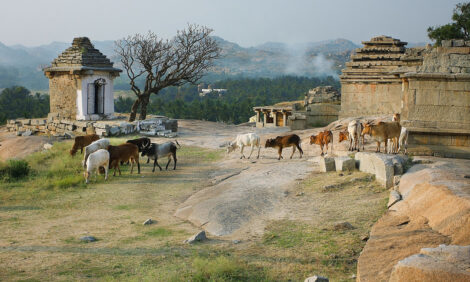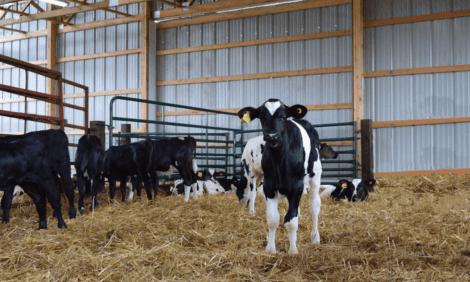



Watch Out for Poisonous Weeds in Hay and Pasture
Noxious and toxic weeds are always a concern to livestock producers. Whether these weeds present themselves in hay or pastures, the only real way to know if they are present is to scout and know the risk, writes Justin Brackenrich, Penn State University Extension.Toxic weeds and plants can come in all shapes in sizes, in and around our hay and pasture fields, leading to concerns for livestock grazers. More often than not, the weeds or plants are unpalatable to the livestock and aren’t something they will “enjoy” eating, therefore, the risk really presents when food shortages are low such as in over-grazed pastures, or during periods of hot and dry weather.
As we move into the dog-days of summer, that small patch of milkweed, or those few stalks of hemlock that were on the wood line, may have now developed into a thriving stand that have spread into your hayfield. What do you do? What is the best answer for managing these weeds? What should we do with hay infested with poisonous weeds?
The first thing to consider is the species of weed that you are dealing with and the amount of weed that the animal must ingest before it becomes an issue. An example of these differences is shown in a comparison between nightshade species and pokeweed species. When considering a plant in the nightshade species, solanine toxicity can come from consumption of vegetation and unripen berries in concentrations in as little as 0.1- 03% body weight.
To a 1,200-pound brood cow, this represents approximately 1.2 pounds of fresh weight. If the same animal were to eat something from the pokeweed species, she would likely need to consume between 150 and 200 berries. These are not “rules” and are not thresholds that should be followed, but rather a guide that different plants do have differences in toxicity. Differences in the toxic properties of plants stresses the importance of plant identification and scouting fields/meadows for these plants.
More information on symptoms, toxic compounds, and dosage can be found in the article Spring Hay and Pasture Weed Issues. This article also discusses options for herbicide and cultural management practices for these weeds.
Another plant that is always considered in pasture and hay production is poison hemlock. This plant is rapidly spreading across Pennsylvania and is often found in follow areas, fence rows, creek banks, and roadways. Since this is a biannual weed, it often goes unnoticed the first year of its life cycle, and then is spotted when it begins to flower. All parts of the plant are poisonous, and some studies have shown toxicosis at 0.25% fresh wt. (of the animal's weight) for horses and 0.5% for cattle. That would be 3 to 6 pounds of material per 1,200-pound animal. Mature seeds are the most poisonous. Significant poisoning can result in muscle paralysis and suffocation.
Removal of toxic plants can be done by hand methods or using a chemical treatment. If you have single plants, many can be easily removed by a shovel or hand pulling. Remember that it is crucial to wear proper PPE (personal protective equipment), as direct contact with many of these plants can lead to rashes or transfer of toxicities to yourself and/or others. Spot spraying is also an option. If the infestation is larger, herbicide options are available for managing these weeds. Herbicides include 2,4-D, Banvel, Crossbow (2,4-D+triclopyr), or glyphosate as a spot treatment. Generally, applications need to be made before the plant flowers or in the fall. For more information on herbicide use consult Weed Management in Pasture Systems and Spring Weed Control in Grass Hay and Pasture. People resist making treatments to control pasture or hay weeds because “control will kill the clover.” (Keep in mind that clover can be reseeded and is much cheaper than vet bills and sick livestock). Maintaining optimum soil pH, fertility, and keeping up good agronomic practices on the operation will also reduce weed pressures and their ability to spread. If you are dealing with more annual grasses, such as giant foxtail, the return to a regular mowing schedule or the use of an herbicide can help eliminate this issue. For more information on annual grasses read Hay, Grassy Weeds, and Prowl.
If you have hay from a field of forage that has weeds that you know or believe are poisonous, the first thing to do is to keep that hay separated from the rest of your supply. Once it is mixed with the rest of your feed, it will be impossible to separate. There is not only the concern of feeding the weed to your livestock, but also introducing that seed into a new area of your operation through feeding or manure. As mentioned earlier, livestock do not prefer to eat poisonous plants as they are not usually palatable, however, if the animal is lacking in forages, they will become less choosy. If in the pasture, make sure they have plenty of forage to choose from.
If the weeds are in your hay, call your local Penn State Agronomy Educator and discuss your options for weed control and the best strategies for feeding that forage. Identification of the weed will be crucial. It will be best to have a sample of the weed, but high-quality images can also substitute.
(Photo Credit: J. Williamson)


